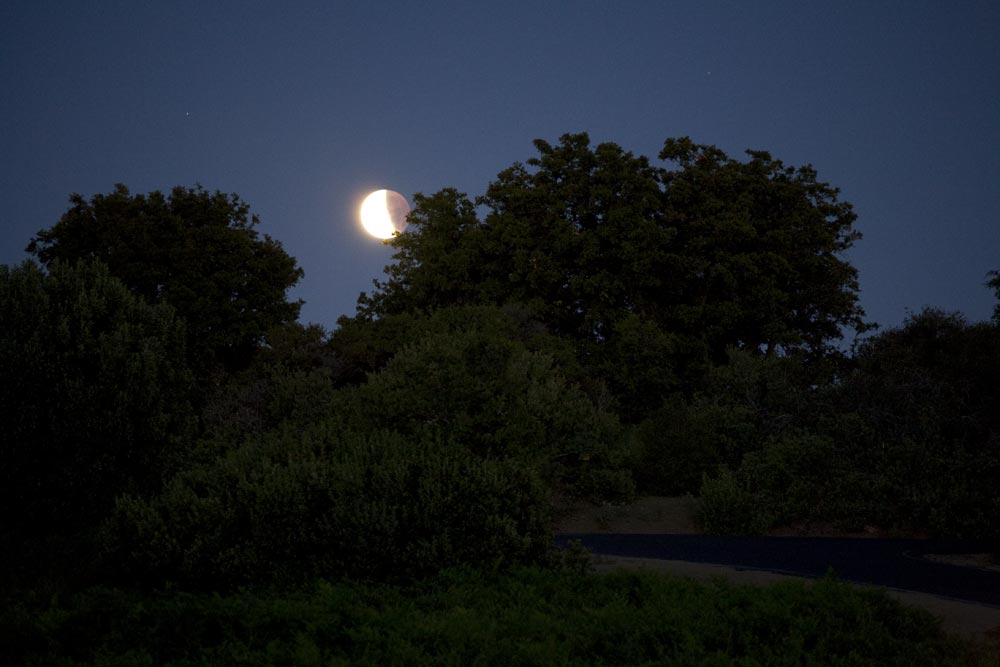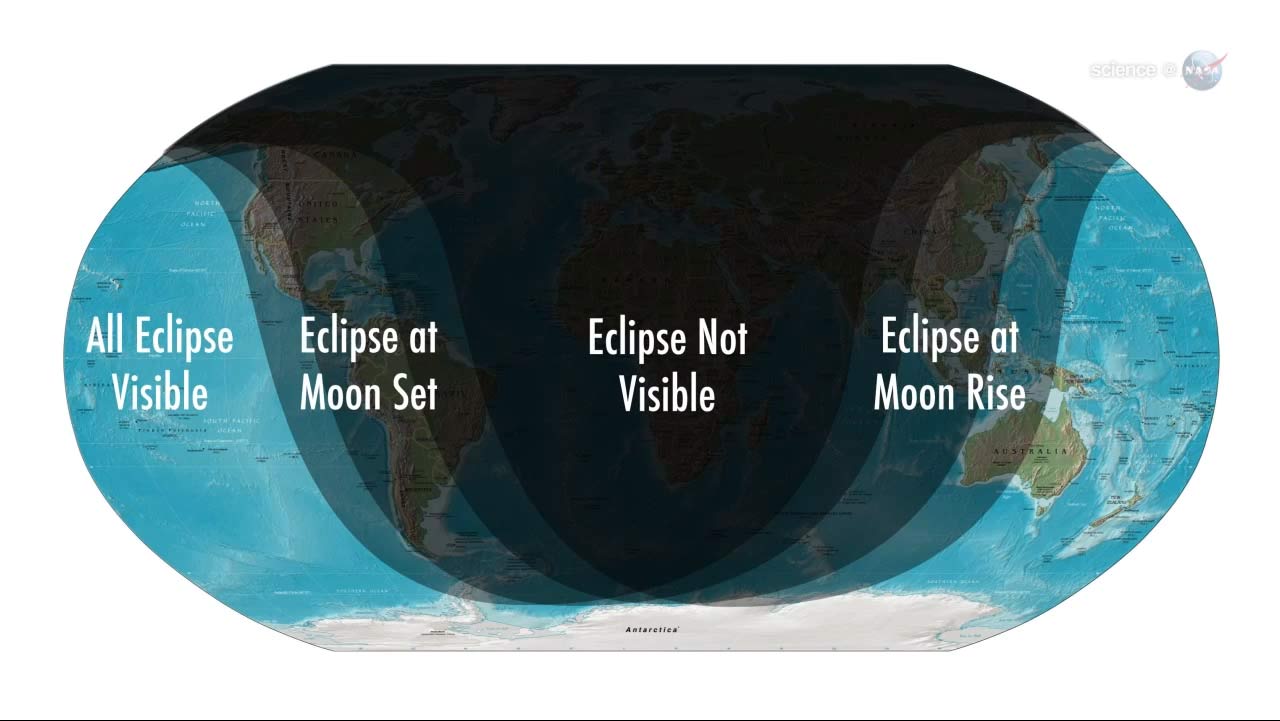Partial Lunar Eclipse Next Week Kicks Off June's Sky Sights

The first lunar eclipse of the year will occur next week when the full moon passes behind Earth, casting a shadow over a large expanse of the lunar surface.
On June 4, a partial lunar eclipse will be visible to skywatchers in North America, South America, Australia, eastern regions of Asia and across the Pacific Ocean, weather permitting.
Lunar eclipses occur when the moon orbits behind Earth with respect to the sun, and the planet's shadow blocks light from the sun that would otherwise hit the moon. Since only a fraction of the moon will covered in shadow next week, astronomers call this type of eclipse a partial lunar eclipse.
For skywatchers in the eastern United States, the eclipse begins before dawn as the moon is setting in the west. The moon will move behind the planet at roughly 6 a.m. EDT (3 a.m. PDT; 1000 GMT). About 37 percent of the moon's surface will be darkened at maximum eclipse, which will take place at approximately 7:04 a.m. EDT (4:04 a.m. PDT; 1104 GMT), according to NASA astronomers.

Observers in the eastern United States will be particularly well-placed to see what is known as the "moon illusion," which is a curious spectacle not fully understood by scientists. In this optical illusion, a low-hanging moon appears larger than normal when it beams through trees, buildings and other foreground objects. [Best Telescopes for Beginners]
In reality, low moons are no wider or larger than any other moon, but the human brain strangely sees it that way. The illusion is part of the mind's attempt to make sense of the moon in relation to earthly objects on the horizon.
According to NASA, skywatchers east of Mississippi will be treated to an extra large eclipsed moon, which will appear low in the west at daybreak.
Get the Space.com Newsletter
Breaking space news, the latest updates on rocket launches, skywatching events and more!
The moon on June 4 will also be a full one. Native American folklore dictates that this full moon is called the Strawberry Moon, because it coincides with the season for harvesting strawberries.
Next week's lunar eclipse is the second in an impressive trio of celestial events.
A spectacular annular solar eclipse, when the moon passed between Earth and the sun to create a so-called "ring of fire" in the sky, wowed skywatchers on May 20. On June 4, the Earth, moon and sun will reverse their order, so that the moon is eclipsed rather than the sun.
To cap off the stunning lineup of sky shows, the transit of Venus will occur on June 5, as Venus moves directly between the Earth and the sun in a rare spectacle that will not be visible again until 2117.
Editor's note: If you snap a great photo of the partial lunar eclipse and would like it to be considered for use in a story or gallery, please send images and comments to SPACE.com managing editor Tariq Malik at tmalik@space.com.
Follow SPACE.com for the latest in space science and exploration news on Twitter @Spacedotcom and on Facebook.
Join our Space Forums to keep talking space on the latest missions, night sky and more! And if you have a news tip, correction or comment, let us know at: community@space.com.

Space.com is the premier source of space exploration, innovation and astronomy news, chronicling (and celebrating) humanity's ongoing expansion across the final frontier. Originally founded in 1999, Space.com is, and always has been, the passion of writers and editors who are space fans and also trained journalists. Our current news team consists of Editor-in-Chief Tariq Malik; Editor Hanneke Weitering, Senior Space Writer Mike Wall; Senior Writer Meghan Bartels; Senior Writer Chelsea Gohd, Senior Writer Tereza Pultarova and Staff Writer Alexander Cox, focusing on e-commerce. Senior Producer Steve Spaleta oversees our space videos, with Diana Whitcroft as our Social Media Editor.









